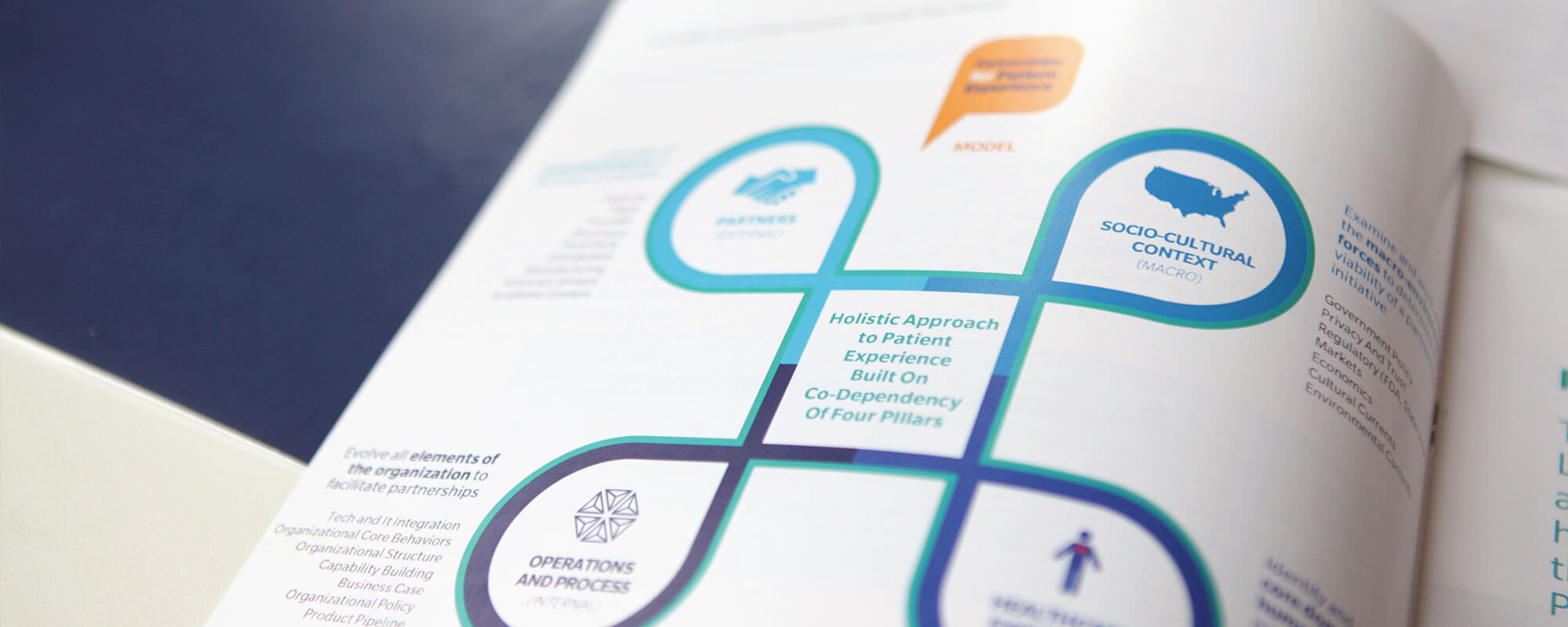
Work Bridgeable
Building patient-centred capabilities with service design
Problem
Bristol-Myers Squibb (BMS) wanted to build patient-centric capabilities and embed them throughout its entire organization
Solution
The Universal Patient Language (UPL), an organizational capability and set of resources that enables better patient-facing communications
Impact
Patient-centric capabilities leveraged at all levels of BMS to deliver an enhanced and award-winning patient experience across multiple channels and therapeutic areas
Author
- Bridgeable
Client
- Bristol-Myers Squibb
Building a culture of patient experience
Over the past decade or so, the healthcare system has undergone rapid change. There is a growing emphasis on shared decision-making between physicians and patients, while patients themselves are more conscious of the tradeoffs involved in their treatment decisions and expect to be engaged, empowered, and given access to a broad range of information and services.
While Bristol-Myers Squibb had a longstanding history of engaging with patients, it wanted a transformative approach to patient engagement that would move away from more traditional approaches and toward design-driven methods.

BMS engaged Bridgeable to collaborate with them on a patient experience strategy rooted in human-centred design, building out capabilities like co-creation, prototyping, and systems thinking. In rolling out the strategy, we decided to focus on patient communications because they are a foundational building block of patient experience and something that BMS produces regularly across the organization.
From the beginning, our objective was threefold:
- Build a new organizational capability in patient-centred communications.
- Help BMS solve the practical challenges of building new patient communications.
- Test the design-based strategy and capabilities.
Over the course of this multi-year project, we have brought together over 600 patients, caregivers, healthcare providers, representatives from advocacy organizations, and subject matter experts to reimagine and redesign how BMS communicates complex topics to patients and caregivers, particularly in oncology. Working with these diverse perspectives, we captured insights into a set of resources called the Universal Patient Language (UPL).
Patients
270+
Caregivers
95+
Healthcare practitioners
165+
Other stakeholders
75+
Building the UPL
The Universal Patient Language (UPL) is an organizational capability and set of resources that helps communicate complex topics to patients.
It consists of seven foundational principles that guide how to plan and execute patient communications. These principles are supported by a rich set of tools, including a graphic assets library, a set of detailed rules, a style guide, and thought starters.



All UPL resources are developed from co-creation and prototyping with patients, caregivers, clinicians, and communication experts. In our UPL work, we use a systems-thinking lens that considers how a given communication fits into the broader patient experience. To promote internal adoption of the UPL, the initiative also includes a robust set of stewardship materials, including UPL training, templates, usage guides, and a digital repository for UPL assets.
[Patient Experience is] really focusing the mindset of the organization on making sure what we produce has value to our patients.
BMS Project Lead
A widely adopted organizational capability
Since 2015, the UPL has been applied to more than 50 communication projects at BMS across 6 therapeutic areas and 15 BMS brands, and everyone from brand managers to research scientists have used the UPL to co-create prototypes with patients, caregivers, clinicians, and communication experts. The output of those projects has been incorporated into patient-facing materials such as brochures, websites, and call centres, while the generalizable learnings about patient communications have been incorporated back into the UPL. In this way, the UPL becomes more robust with each new project.
When the UPL work began in 2014, there was a single individual focused on patient experience. Since then, in large part because of the success of UPL, BMS has established a dedicated Patient Hub of full-time staff who support the patient experience across the organization.
We are faster, better, and we actually create materials for the customers, by the customers.
BMS Project Lead
Bridgeable also developed UPL training modules that are regularly deployed throughout the organization to ensure the UPL is being applied efficiently and consistently.

Beyond this, the adoption of design thinking capabilities has heralded a new way of working within the broader BMS organization, with more collaboration between operational silos than ever before. This has led to greater interest in service design methodology throughout the pharmaceutical space. The UPL has received recognition from the larger pharma community, winning the North American honours for “Most Valuable Patient Initiative or Service” in the 2017 eyeforpharma awards.
It's just more rewarding knowing that patients understand what you're trying to say.
BMS Project participant
Social impact for the broader healthcare system
Because of the success of UPL internally, BMS decided to publicly share the principles and tools on UPL.org. The site is tailored to help people apply the UPL in their own patient communications, whether they work at advocacy organizations, hospitals, or other pharmaceutical companies.
The long-term aspiration is to see the UPL widely adopted by organizations that create patient communications.



For additional information on Universal Patient Language, visit the links below:
Author
- Bridgeable
Client
- Bristol-Myers Squibb
For additional information on Universal Patient Language, visit the links below: